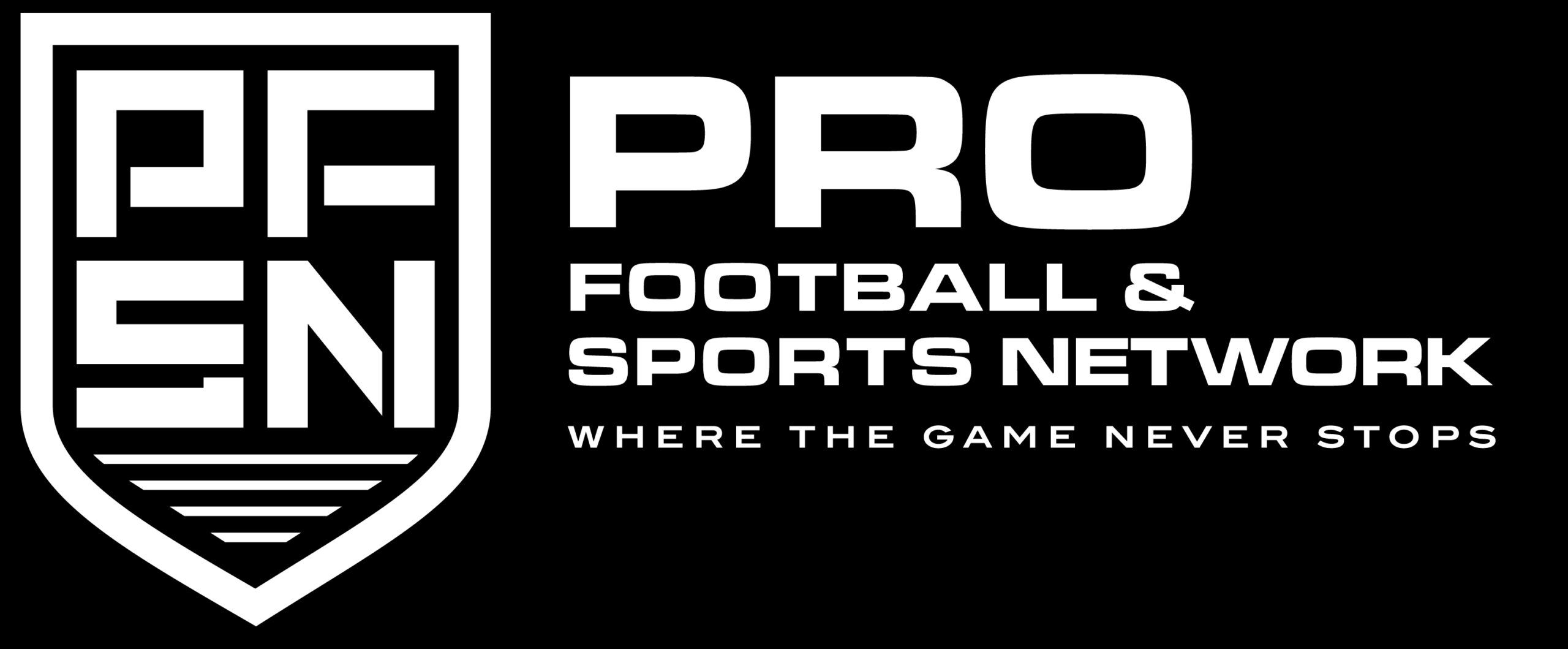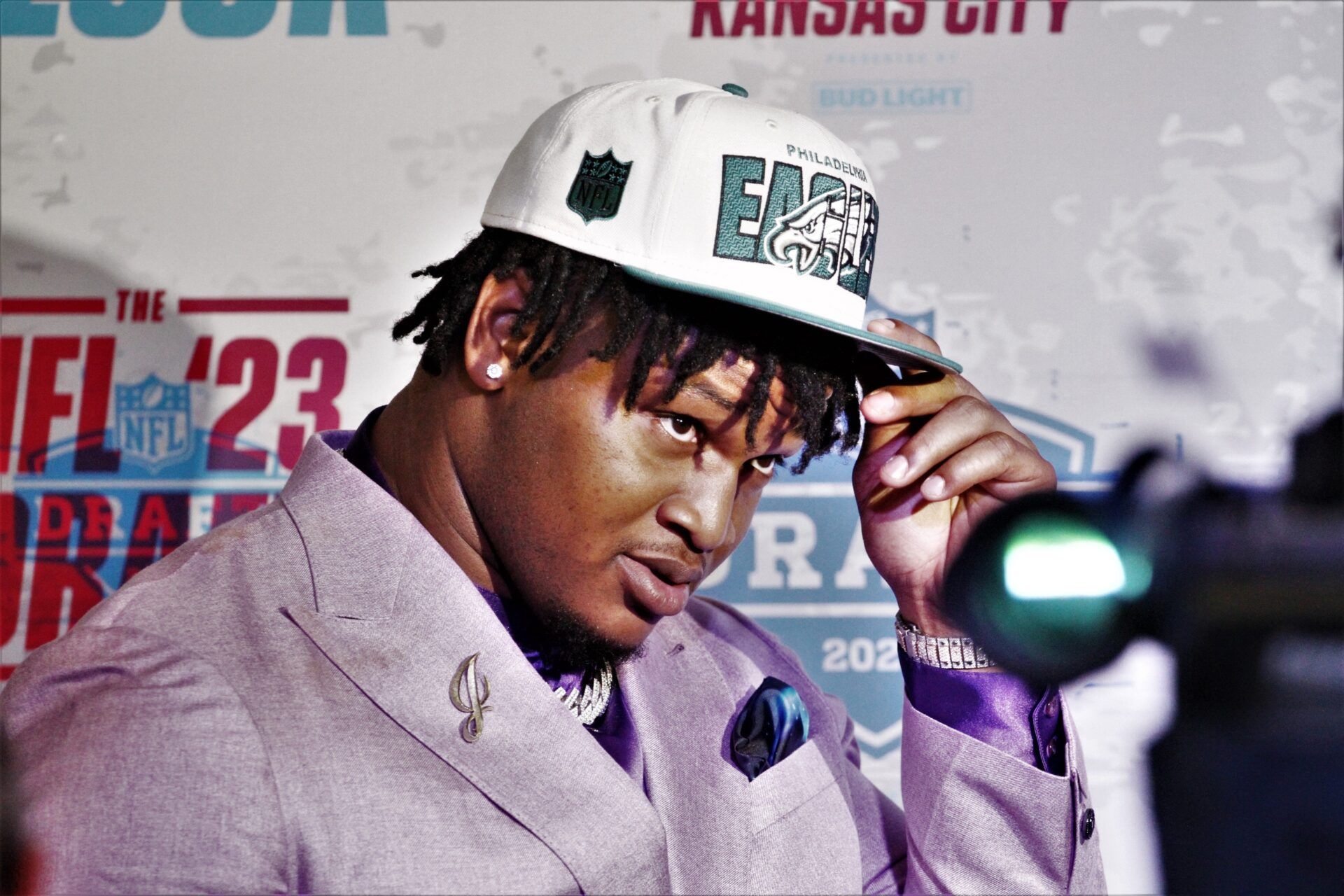The 2023 NFL Draft held its fair share of surprises. One of the “top four” quarterbacks in the NFL Draft, Will Levis, fell out of the first round entirely, while players like Mazi Smith were drafted well ahead of expectation. Levis was ranked 26th overall by consensus, while Smith ranked 49th.
That doesn’t hold a candle to last year, when the No. 1-ranked quarterback by consensus, Malik Willis, fell all the way to the third round while the Patriots grabbed the 76th overall-ranked player in Cole Strange at pick 29.
In 2021, the Saints reached on the 66th-ranked player, Payton Turner, at pick 28. Meanwhile, the 17th-ranked overall player, Jeremiah Owusu-Koramoah, fell to the Browns at pick 52. The year prior to that, 84th-ranked Jordyn Brooks went in Round 1 to the Seahawks while No. 29 overall Josh Jones fell to pick 72.
We Don’t Know (For Sure) When Players Will Be Drafted
Despite the Levis fall, this first round was a lot closer to the community consensus than we’ve seen in a long time, but we still ended up fairly surprised. Players like Joey Porter Jr., Brian Branch, and Michael Mayer ended up undrafted after the first round, yet Jack Campbell and Felix Anudike-Uzomah saw their names called early.
ESPN constructed a draft model that estimated the likelihood that a given player would be available at a particular pick. So, you could, in theory, estimate how likely it was that Levis would be available at 19th overall for Tampa Bay. It’s a great idea, so long as it’s done well. But ESPN committed to being overconfident in their model.
Will Levis had almost zero chance to *not* be picked in the first round, according to ESPN Analytics.
Where could he land tomorrow? 🤔 pic.twitter.com/LVEsZZjmh7
— SportsCenter (@SportsCenter) April 28, 2023
Not only was Levis given a better than 99.9% chance of being drafted in the first round, two other players were taken at spots that ESPN’s model estimated would be one-in-a-thousand odds. Will McDonald IV was not projected to go earlier than 22 with any degree of certainty, while Jahmyr Gibbs was given a 99.7% chance of being available at pick 18.
MORE: FREE NFL Mock Draft Simulator With Trades
ESPN’s broader point that both teams reached is appreciated, and it’s a fine argument to make, but they make it too strongly and with confidence that isn’t appropriate for a process as opaque as the draft. Having one “one in a thousand” event occur in one draft is fine, if a little unlikely. Having three of them happen very likely means the model is incorrect.
After all, it’s not impossible to build models with uncertainty in mind. Jason Fitzgerald at Over the Cap has done an excellent job of it.
Why Do We Constantly Talk About Reaches and Steals?
The Philadelphia Eagles got the steals of the draft last year with Jordan Davis and Nakobe Dean. The year prior, the Chicago Bears earned a pair of steals with Justin Fields and Teven Jenkins. Likewise, in 2019, the Buffalo Bills secured A.J. Epenesa — the 23rd overall player — at pick 54.
While there’s still time for all of these players to turn into impact players, they thus far have not had much of an effect on the field. The closest right now would be Davis, who was part of a heavy rotation, was effective when he played, and did have some injuries in the middle part of the season.
The steals aren’t always steals, and the reaches — Justin Herbert and Patrick Mahomes come to mind — aren’t always reaches.
Historically, when an NFL team reaches on a player in the draft, there’s a pretty good chance that they’re wrong — but it’s not 100%. When a player drops in the draft, and that team grabs a steal, there’s a slightly stronger chance that the NFL is right and that the consensus is wrong.
MORE: Biggest Round 1 Steals and Snubs in the 2023 NFL Draft
The point isn’t that the NFL knows better than analysts do. They generally do, but not always. In fact, the consensus big board is almost as accurate as the NFL when it comes to predicting player outcomes despite the NFL’s massive information advantage through medical checks, proprietary psychological testing, and background character research.
Rather, it’s that we’re far too confident in projecting the outcomes in one of the most difficult prediction games sports has available to us.
This isn’t to say we shouldn’t be confident in our evaluations when we grade drafts, but that our confidence should also include the ability to take in new information. Whether that’s information about a quarterback doing poorly in interviews or an injury cropping up that we’re unaware of.
In the NFL Draft, It Pays To Be Confident But Open
Entering Day 2 of the draft, cornerback Joey Porter Jr. is the highest-ranked player on the industry consensus board at 12th overall and is ranked as the second-highest player on the Pro Football Network Big Board at No. 17. I’m confident he’ll do well for the team that drafts him, but I wouldn’t be surprised if he struggles.
The NFL can be overconfident as well. Generally speaking, the front offices of most of these organizations aren’t aggressive enough when it comes to incorporating positional value. The Detroit Lions are a great example; they’ve invested in players at non-premium positions like running back and linebacker while punting on quarterback. When they’ve invested in high-value positions, like receiver, they’ve tended to overpay.
The Minnesota Vikings may have “lost” the trade down with the Lions last year, according to the traditional draft pick trade market, but the average value of their picks was higher than the average value of the 12th pick.
Even “analytically” sound teams like the Baltimore Ravens can do this, with their investments in players like Patrick Queen and Tyler Linderbaum. The idea that one can’t go wrong by simply taking the best player on the board overestimates how well one can determine the “best” player and underestimates the degree to which the draft is a series of gambles, and the best moves are the ones that stack the deck in one’s favor.
That’s not to say all low-positional value picks aren’t worth it. The Indianapolis Colts were probably correct to select Quentin Nelson, and the Kansas City Chiefs could have selected Creed Humphrey in Round 1 and gotten value for him.
MORE: 2023 NFL Draft Winners and Losers Include the Eagles, Anthony Richardson, and Will Levis
But our ability to identify exceptions to the rule is limited. The NFL should be a little bit more open to the conversations about positional value that have been going around the league.
The Eagles, who just came off an unlikely run to the Super Bowl, are one such team. They’ve been connected nationally to a running back like Bijan Robinson, but local Philadelphia writers have been confident that the Eagles wouldn’t invest in an RB in Round 1, just like they wouldn’t likely invest in an off-ball LB in the first round.
Philadelphia invests in receivers, cornerbacks, edge rushers, and defensive linemen with those premium picks, and it seems to work out for them. Occasionally, they’ll spend up at one of those positions or move around in the draft to take a player out of their value slot, but those moves are generally rare. Not only that, the Eagles aren’t shy about investing in positions where they have medium-term needs or positions that see significant injury turnover.
The Eagles draft with uncertainty in mind, and more NFL teams should do the same.

